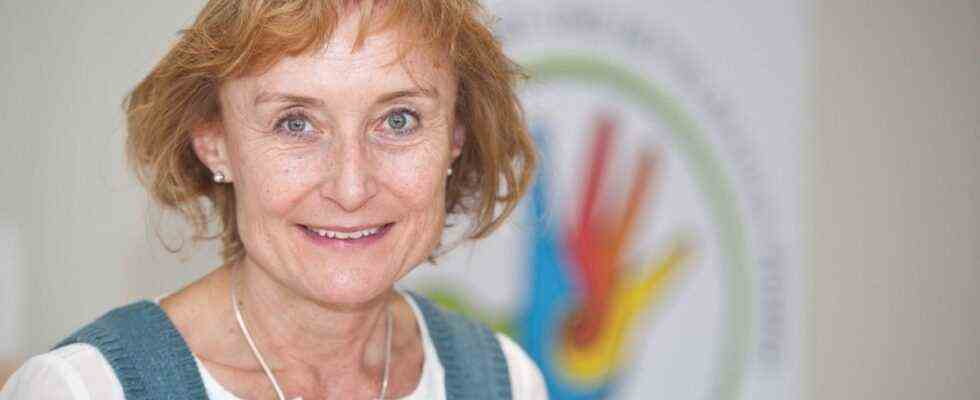“Hopefully the neighbors won’t notice,” is still often the first thought of parents when it turns out that the path after the fourth grade does not lead to secondary school or grammar school, but that the next educational institution is called secondary school.
Who is telling this is Eva Guerin, Rector of the Anni-Pickert-Grund- und Mittelschule Poing, who gave a lecture entitled “Middle School Before Collapse” at the annual general meeting of the Working Group School, Education and Sport (AKS) of the CSU District Association Ebersberg holds. The headmistress is very well aware of the explosive nature of this, but she consciously chose these clear words to draw attention to the current misery.
In the first place: blatant teacher shortage. The days of clear classes are long gone – today the divider is 30. And where there were real tandems when the all-day classes were introduced to separate the classes in German, math and English, today it is generally a matter of avoiding lost lessons, by also teaching other subjects. A fatal development, because the practice-oriented work with wood and metal or the field of housekeeping, i.e. the subjects of technology, economics and social affairs, is the outstanding feature of a school type from which “the most important pillars of our society” emerge with craftsmen and skilled workers.
The reasons why the next generation of pedagogues is more attracted to secondary schools and grammar schools? According to Guerin, because middle school stands for “the largest classes, the most difficult pupils, poor pay, hardly any opportunities for advancement”. In addition, there is a lack of appreciation, although “all high school teachers have a high school diploma and a degree” to which, in contrast to high school teachers, for example, also subject group didactics and educational sciences belong: “Our teachers who do an amazing job are not recognized, not seen.”
But not only the lack of reputation influences the decision for this career path. “The prospective teachers often don’t even know how nice it is with us.” Because most of them would not have seen the inside of a middle school during their own school days.
As a solution to this complex of topics, Guerin suggests, in addition to an immediate adjustment of the starting salaries of all school types, long-term harmonization of the study regulations for everyone in order to create greater permeability in the training of teachers: everyone would have to complete a uniform degree, in the basic course with educational sciences and Subject didactics, then everyone should commit to two subjects. You could then register preferences, but it would be up to the state to send everyone “wherever there is need”. Regardless of the type of school. This is exactly what the civil service is there for, in order to deploy the teachers precisely. However, she firmly rejects a comprehensive school, she considers the three-tier school system to be justified, after all, it also depends on academic potential.
What is clear at any point in Guerin’s passionate plea “in favor of upgrading the middle school”: She firmly believes in the opportunities and legitimacy of this type of school with its early introduction to the professional world and variety of different, practical experiences as a supplier of “people we urgently need.” I never call a philosopher or Germanist, but a craftsman four to six times a year! ” And she loves her students, who “have such a big heart and from whom you get so much back”.
This is precisely why she also touches on another, quite problematic topic: the steadily increasing proportion of children with increased needs in the regular middle school classes. In contrast to before, it is the parents’ will that enables the change from the special needs school, even if the leaving school has concerns and the teachers of the receiving school see the overstrain during the several weeks of trial lessons. Instead of lived inclusion, you then have a situation in which you can no longer really do justice to anyone. Especially since there are also returnees from secondary school and high school who, to prove their coolness, upset the entire class structure.
The lecture is followed by a lively discussion with those present, many of whom have experience from school work themselves, but are otherwise familiar with the topic as parents, trainers from the trade or potential employers. It turns out that there is an urgent need to change the image of the middle school – including the attractiveness of the school building – but above all the general conditions. The report by Olga Singer, who was re-elected AKS chairman and vice-principal of the Anni Pickert School at the end of the evening, speaks volumes here. She is supposed to teach 24 children together in Protestant religion, the divisor is 28. You would think that would not be a problem if it weren’t for the different curricula – grades five to eight are sitting in the room.
The creativity that you need to manage this balancing act probably best shows how versatile the teachers of the middle schools are. And that they do everything in their power to avoid “collapse”. Now it would be the turn of politics.

